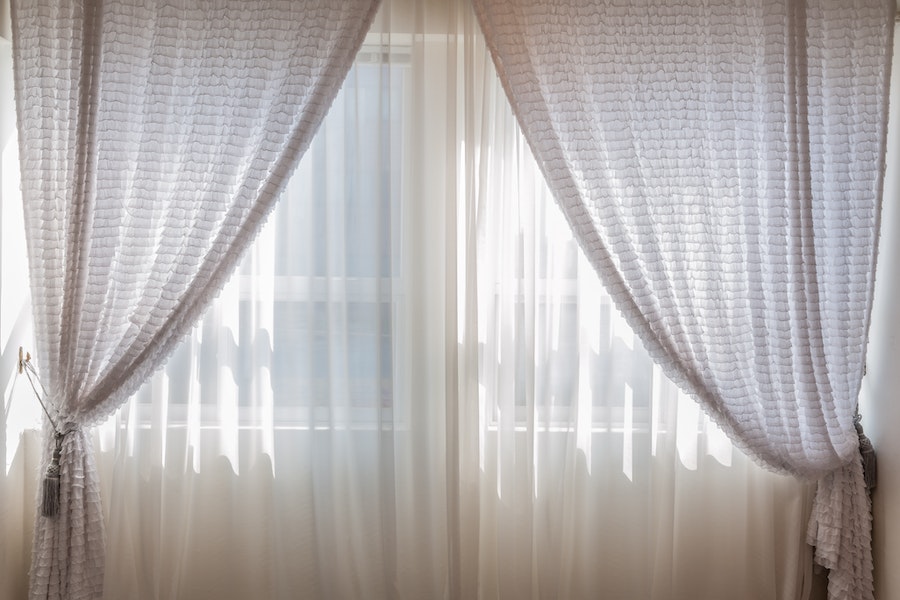Curtains have the remarkable ability to transform a room, adding a touch of elegance and style while providing privacy and light control. Yet, among the many decisions that come with choosing curtains, one question often lingers: “Do curtains have to touch the floor?” It’s a query that has sparked debates among interior enthusiasts and homeowners alike. In this article, we will explore the nuances of curtain length, offering insights into various styles and factors to consider when deciding whether or not your curtains should gracefully graze the floor. Whether you’re aiming for a classic, contemporary, or minimalist look, understanding the role of curtain length is essential in achieving the perfect ambiance for your space. So, let’s unravel the curtain conundrum and discover the answers you seek.
Do Curtains Have to Touch the Floor?
The question that has baffled many is whether curtains have to touch the floor. The answer isn’t a simple yes or no. It depends on various factors like the room’s style, your personal preference, and the function of the curtains.
Choosing the Right Curtain Length: To Gap or Not to Gap
Certainly, you can leave a gap between the curtains and the floor, and this choice largely depends on your personal preferences and the style you want to achieve in your space. Leaving a gap can create a distinctive look and offer several benefits.
A small gap between the curtains and the floor can help prevent the curtains from gathering dust and dirt that often accumulates at floor level. This can be particularly useful in spaces where cleanliness is a priority, such as kitchens or bathrooms.
Secondly, a gap can provide a more relaxed and casual appearance to your room. It’s a style choice that can work well in informal living spaces, bedrooms, or spaces where you want to maintain a laid-back atmosphere.
Leaving a gap can be practical if you have pets or small children. Curtains that touch the floor might be more susceptible to stains, tears, or general wear and tear, which can be avoided by raising them slightly.
The decision to leave a gap between your curtains and the floor is a matter of personal taste and the specific needs of your space. Whether you prefer the classic elegance of floor-length drapes or the contemporary charm of curtains with a gap, there’s no one-size-fits-all answer, and it all comes down to what suits your style and lifestyle best.
Selecting The Perfect Curtain Fabric For Your Space
When it comes to curtains and their overall effect on your home, your choice of fabric can have a big impact. The look, feel, and maintenance of your curtains can all be impacted by the fabric they are made of. Your choice of fabric matters in the following ways:
- Appearance: The type of textile you choose can greatly influence the aesthetics of your curtains. For example, heavy fabrics like velvet or brocade can create a rich, luxurious look, while sheer fabrics like chiffon or lace offer a delicate, airy appearance. The color and pattern of the textile also play a role in the overall design of the room.
- Light Control: Different textiles have varying levels of opacity. Thicker and denser fabrics provide better light control and privacy, making them ideal for bedrooms or rooms where you want to block out sunlight. Sheer fabrics allow more light to filter through, creating a soft and diffused glow.
- Insulation: The thermal properties of the textile can impact the insulation of your space. Heavier and tightly woven fabrics offer better insulation, helping to keep your room warmer in the winter and cooler in the summer. This can contribute to energy efficiency.
- Durability: The durability of your curtains depends on the textile as well. Some fabrics are more resistant to wear and tear, making them suitable for high-traffic areas or households with pets and children. Others may be more delicate and require careful handling.
- Maintenance: Different textiles have varying care requirements. Some may be machine washable, while others require dry cleaning. Considering your lifestyle and willingness to maintain your curtains can influence your textile choice.
- Acoustic Properties: Certain textiles can absorb sound, helping to reduce noise levels in a room. This can be beneficial in spaces where sound control is important, such as home theaters or bedrooms.
- Style and Theme: Your choice of textile can align with the overall style and theme of your room. For example, natural fibers like linen or cotton can complement a rustic or coastal decor, while silk or satin may enhance a more formal or glamorous ambiance.
The textile you choose for your curtains can have a significant impact on the overall look, feel, and functionality of your space. It’s important to consider your specific needs and preferences when selecting the right textile for your curtains.
Factors Influencing Curtain Length
Now that we’ve explored different curtain lengths let’s delve deeper into the factors that influence your decision.
1. Room Type
Consider the room’s purpose. Formal spaces like the living room and dining room often benefit from floor-length curtains, while kitchens and bathrooms may require shorter options.
2. Window Size
The size of your windows plays a crucial role. Larger windows can accommodate longer curtains, while smaller windows may look overwhelmed with floor-length drapes.
3. Style Preference
Your personal style and the overall design of the room are vital. Traditional, classic interiors tend to favor floor-length curtains, while modern spaces may opt for shorter lengths.
4. Maintenance
Think about practicality. Floor-length curtains may accumulate dust and dirt more quickly. Consider your willingness to maintain and clean them regularly.
5. Budget
Curtains come in various price ranges. Longer curtains may require more fabric and, consequently, a higher budget.
6. Privacy and Light Control
Evaluate the need for privacy and light control in the room. Bedrooms, for example, may require floor-length blackout curtains for a peaceful night’s sleep.
7. Flooring Type
The type of flooring in the room can also influence your decision. In rooms with wall-to-wall carpeting, floor-length curtains can create a seamless look.
Conclusion
In conclusion, the choice of curtain fabric is a pivotal decision that can significantly influence the appearance, functionality, and overall atmosphere of your space. From aesthetics and light control to insulation and maintenance, each aspect of your textile selection plays a vital role in shaping the character of your room. By carefully considering your specific needs, style preferences, and the unique requirements of your space, you can make an informed decision when selecting the perfect curtain fabric. Whether you prioritize elegance, practicality, or a blend of both, the right textile choice will enhance your room’s charm and comfort, ultimately creating a space that reflects your individual taste and serves your lifestyle effectively
FAQs
What are the best curtain fabrics for bedrooms?
Answer: For bedrooms, it’s often advisable to choose curtain fabrics that provide privacy and light control. Heavier fabrics like blackout curtains or dense cotton can be excellent choices as they block out light effectively and offer a cozy atmosphere for restful sleep.
Are there any eco-friendly curtain fabric options?
Answer: Yes, there are eco-friendly curtain fabric options available. Look for curtains made from sustainable materials like organic cotton, linen, or hemp. Additionally, consider curtains with certifications such as GOTS (Global Organic Textile Standard) or OEKO-TEX Standard 100, which ensure that the fabric is free from harmful chemicals.
Can I use the same curtain fabric throughout my entire home?
Answer: While you can use the same curtain fabric throughout your home for a cohesive look, it’s not a strict rule. Different rooms may have varying requirements, such as bedrooms needing blackout curtains and living rooms benefiting from sheer or decorative fabrics. So, while consistency can be appealing, it’s essential to consider the specific needs and aesthetics of each space when choosing curtain fabric.




















Leave a Reply